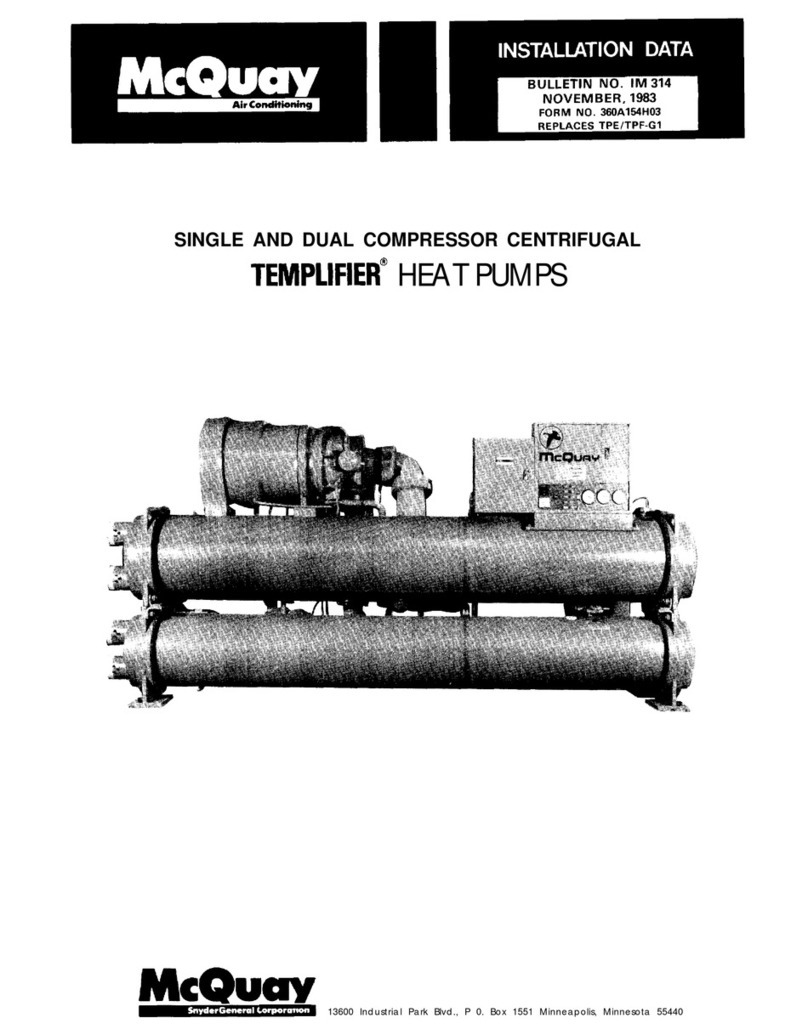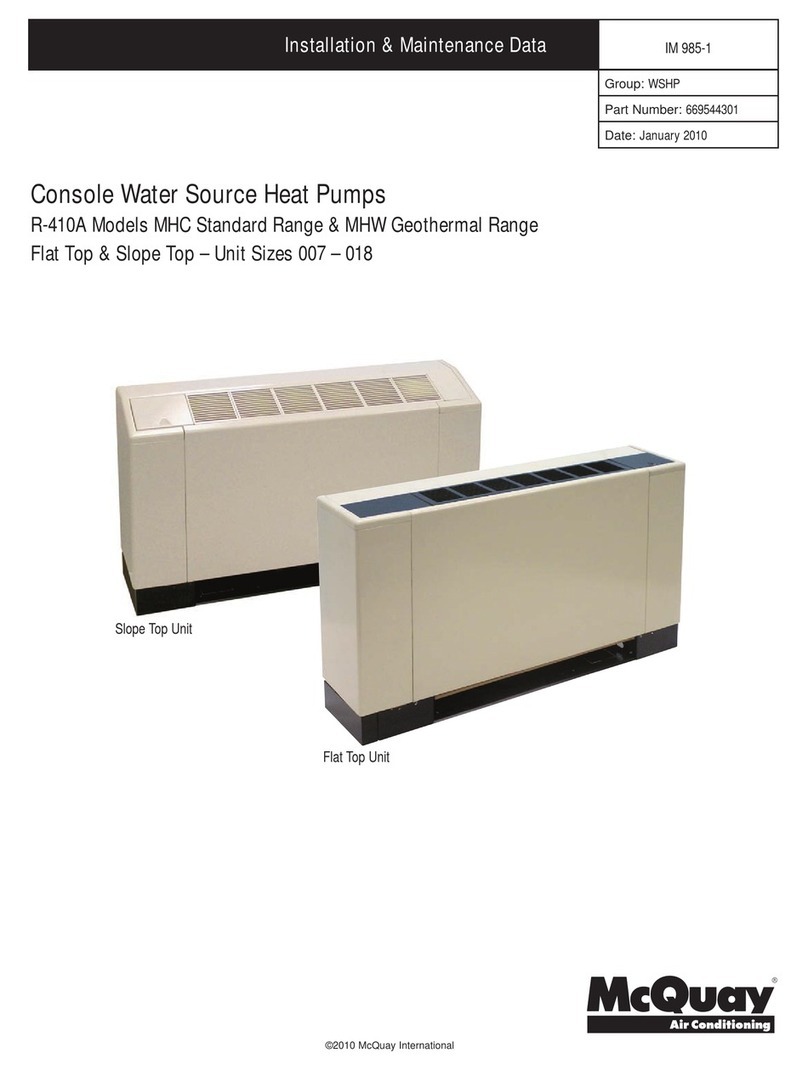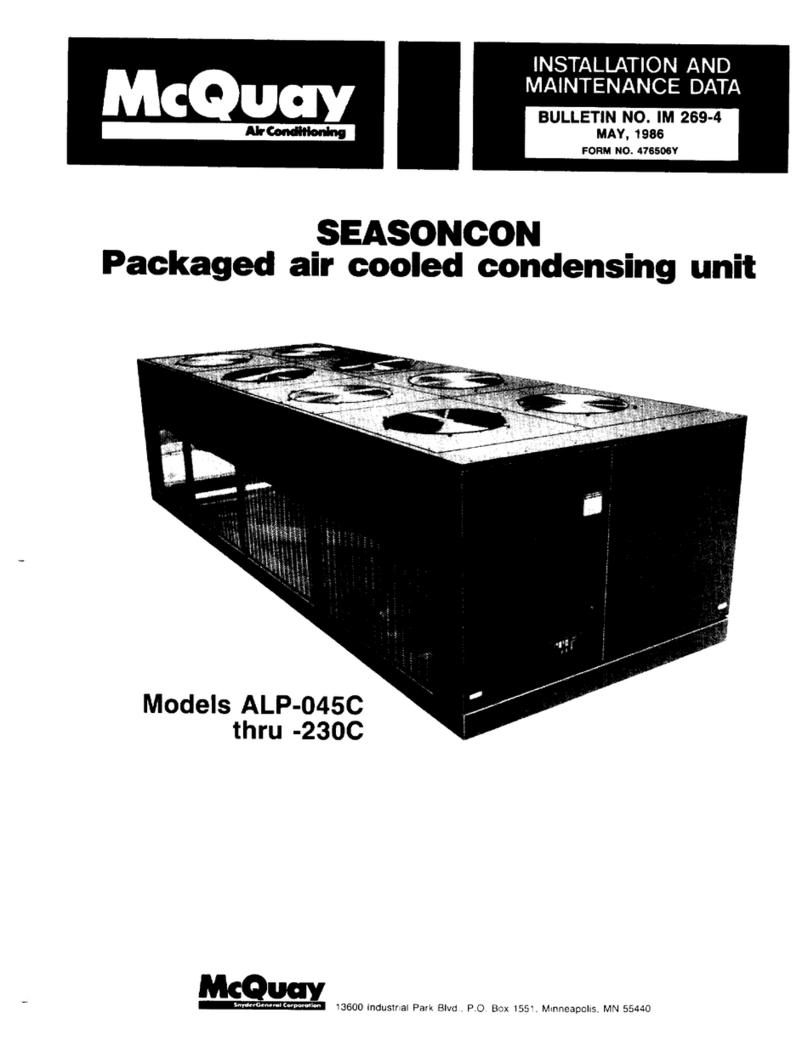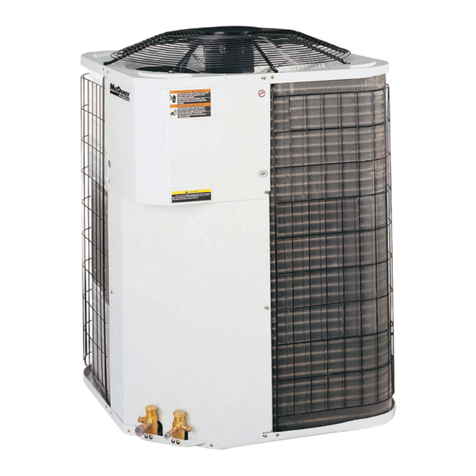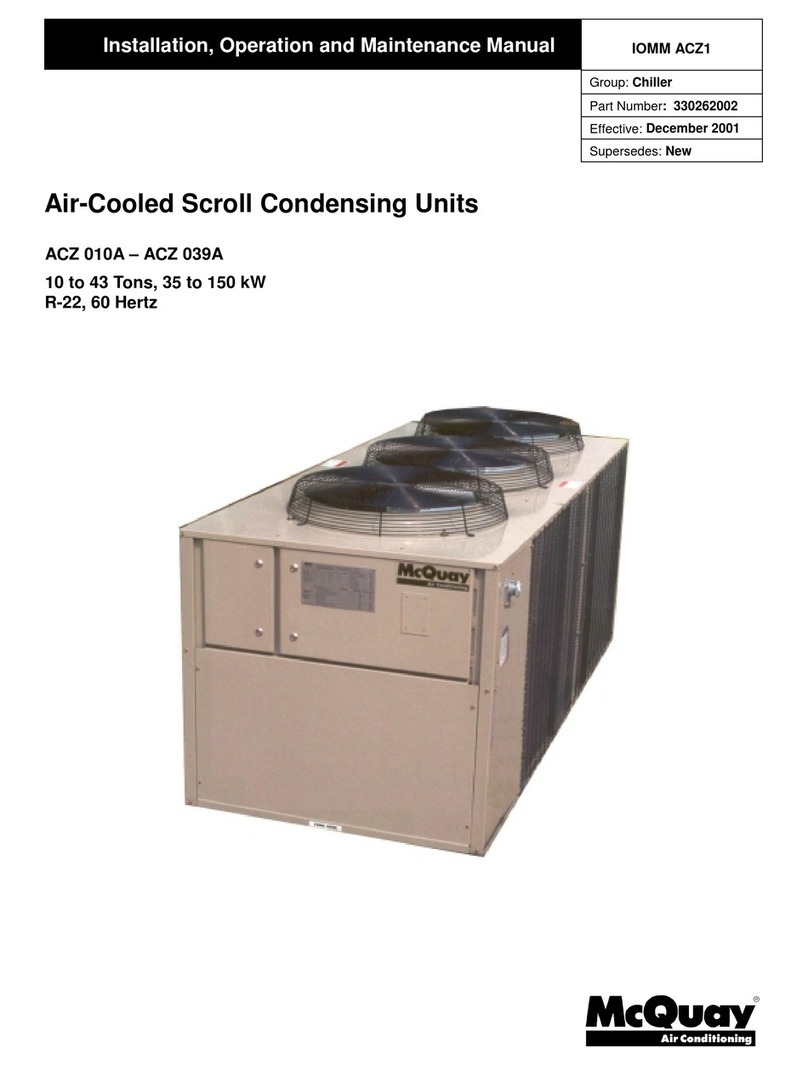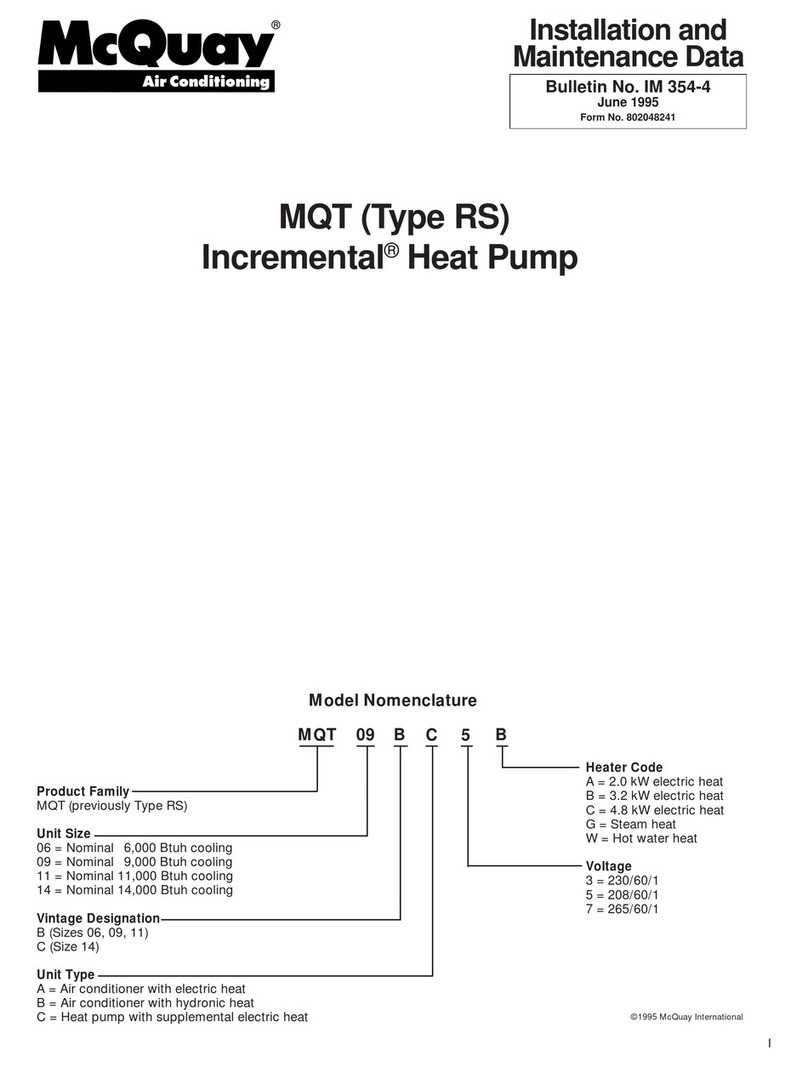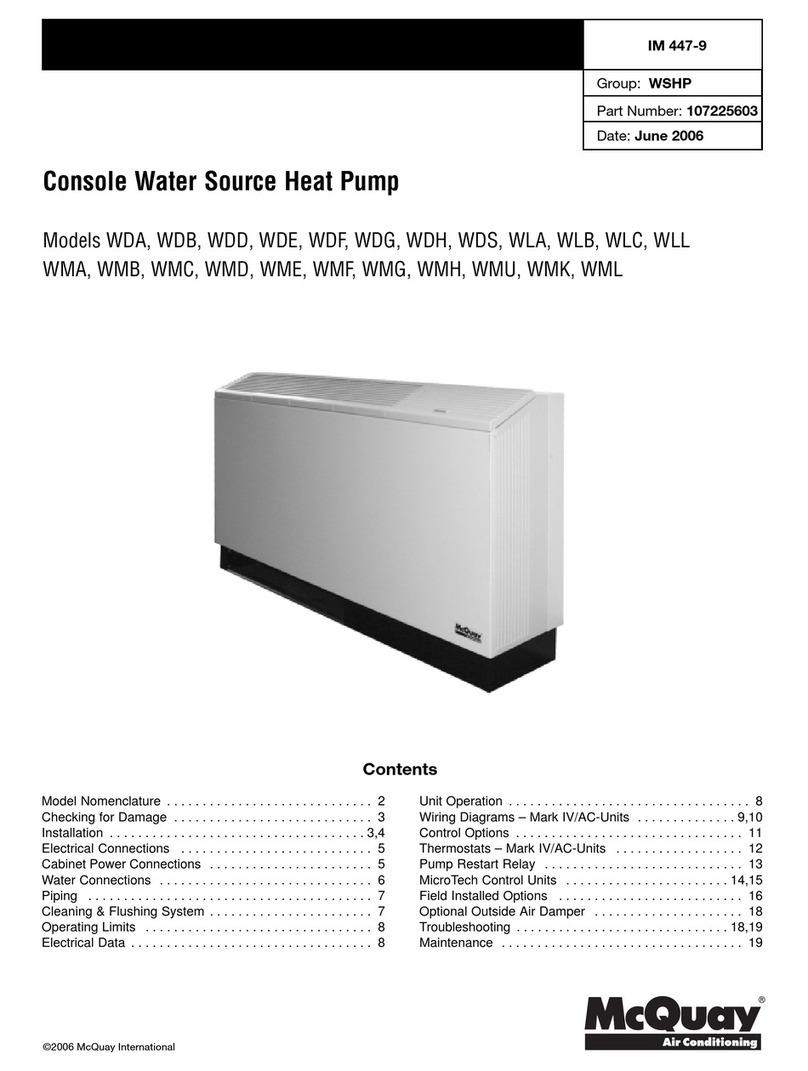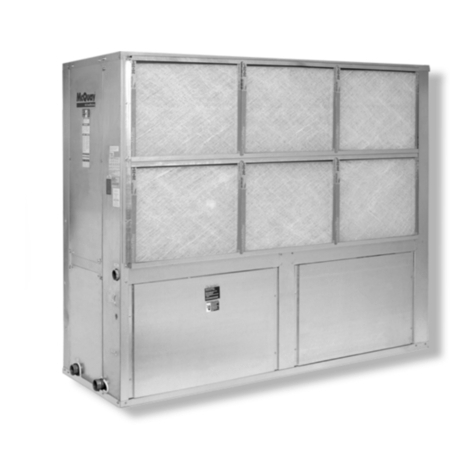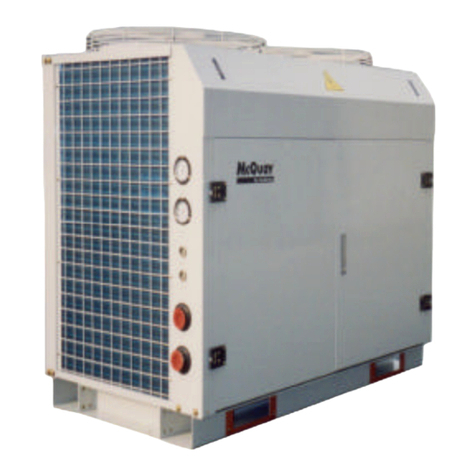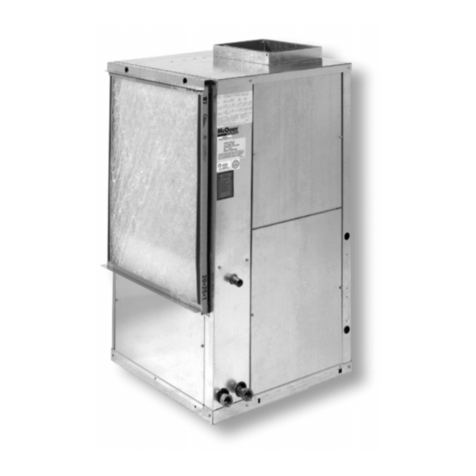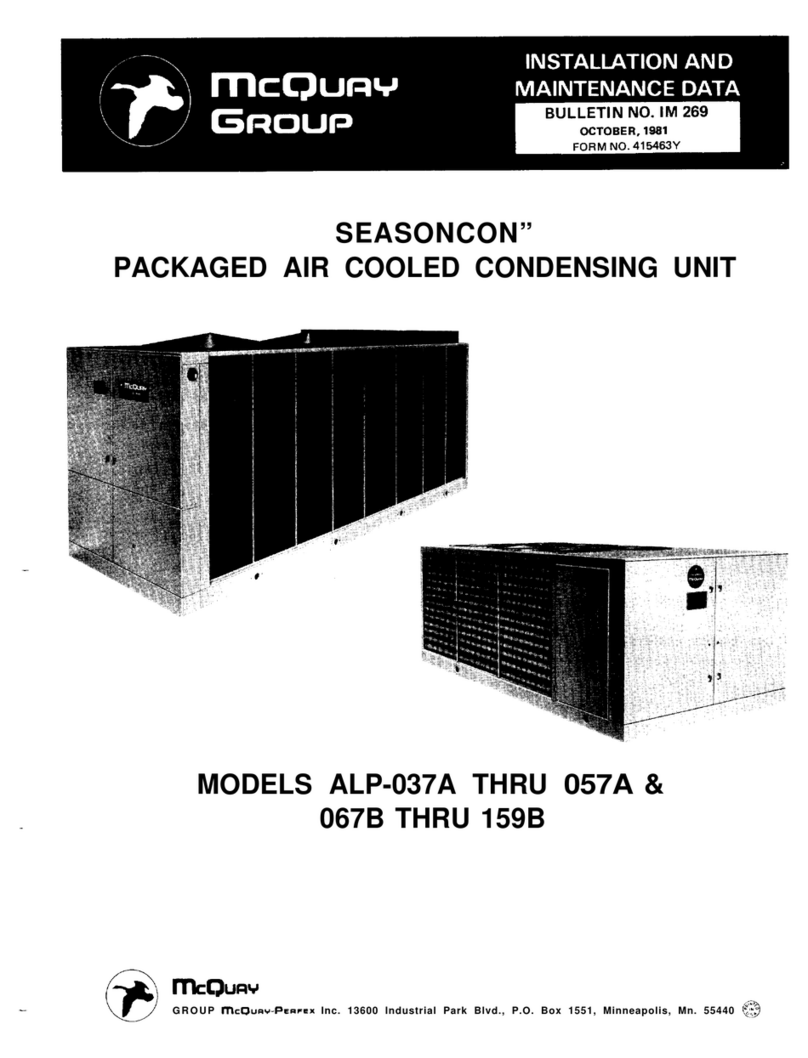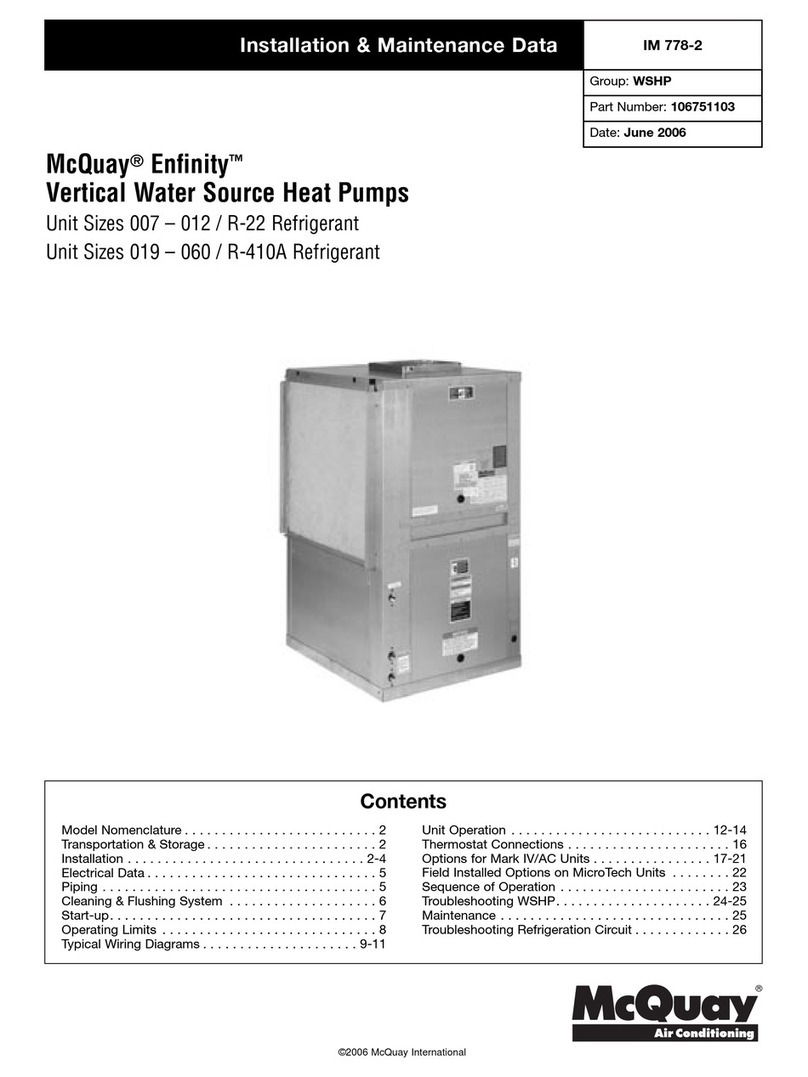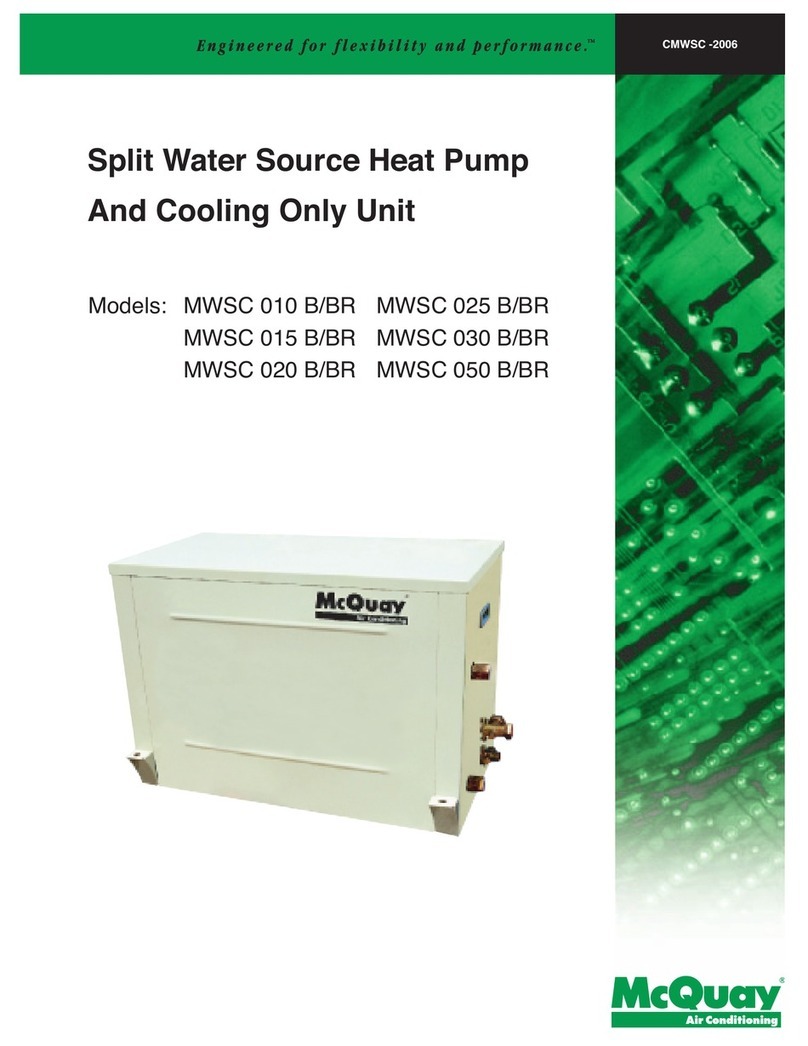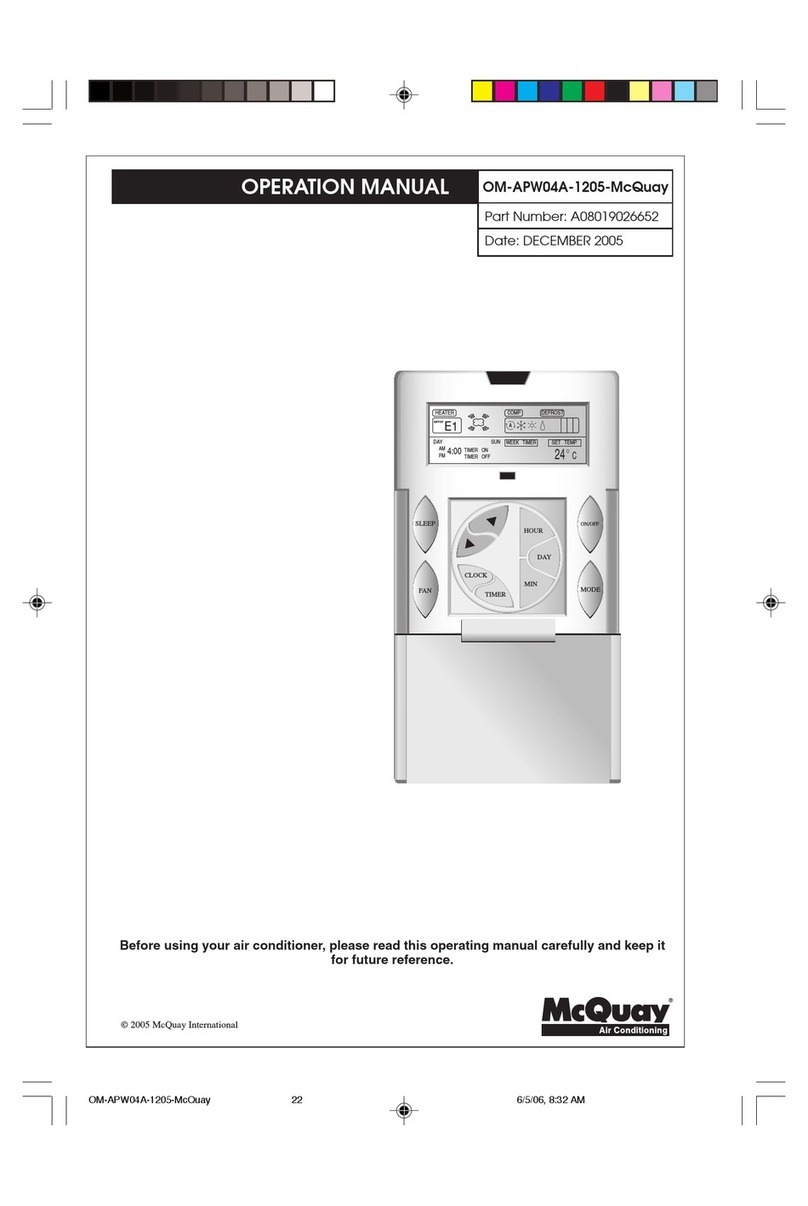
INTRODUCTION
GENERAL DESCRIPTION
McQuay type ALP SEASONCON air cooled condensing units
are designed for outdoor installations and are compatible with
either air handling or chilled water systems. Each unit is com-
pletely assembled and factory wired before evacuation, charg-
ing and testing. Each unit consists of twin air cooled con-
densers with integral subcooler sections, multiple accessi-
ble hermetic compressors, complete discharge piping and
suction connections for connection to any air or water cool-
ing evaporator.
The electrical control center includes all safety and
operating controls necessary for dependable automatic
operation except for the cooling thermostat since this is
somewhat depended upon the unit application. Compressors
and fan motors are fused in all three conductor legs and
started by their own three pole contactor.
NOMENCLATURE
ALP-089BD
TTT 1-TT
Propeller Fan
Refrigerant Circuits
(D
=
Dual; S = Single)
Design Vintage
Nominal Capacity (Tons)
INSPECTION
When all the equipment is received, all items should be carefully checked against the bill of lading to insure a complete ship-
ment. All units should be carefully inspected for damage upon arrival. All shipping damage should be reported to the carrier
and a claim should be filed. The unit serial plate should be checked before unloading the unit to be sure that it agrees with
the power supply available.
INSTALLATION
NOTE: Installation and maintenance are to be performed only by qualified personnel who are familiar with local codes
and regulations, and experienced with this type of equipment. CAUTION: Sharp edges and coil surfaces are a potential
injury hazard. Avoid contact with them.
HANDLING
Figure 1. Suggested Pushing Arrangement
Care should be taken to avoid rough handling or shock due
to dropping the unit. Do not push or pull the unit from anything
other than the base, and block the pushing vehicle away from
the unit to prevent damage to the sheetmetal cabinet and end
frame (see Figure 1).
BLOCKING
REQ’D.
ACROSS FULL WIDTH
\
Never allow any part of the unit to fall during unloaing or
moving as this may result in serious damage.
To lift the unit,
2V2”
diameter lifting holes are provided in
the base of the unit. Spreader bars and cables should be ar-
ranged to prevent damage to the condenser coils or unit
cabinet (see Figure 2).
0
LOCATION Figure 2. Suggested Lifting Arrangement
Due to the vertical condenser design, it is recommended that
certain precautions be taken before installation to orient the
unit so that prevailing winds blow parallel to the unit length,
thus minimizing effects on condensing pressure. If it is not
practical to orient the unit in this manner, a wind deflecting
fence should be considered.
SPREADER
The clearance requirements for these units are given in
Figure 3.
SERVICE ACCESS
Each end of the unit must be accessible after installation for
periodic service work. Compressors, filter-driers, and manual
liquid line shutoff valves are accessible from the control center
end of the unit through removable access panels on unit sizes
089,106, and 126 through 179 and hinged side access doors
on unit sizes 037 through 078, 091, 098 and 107. All opera-
tional, safety, and starting controls are located in the unit con-
trol center. Capped connections for field service gauges are
also located inside these enclosures.
CAUTION: Disconnect all power
to
the unit while servicing
condenser fan drives.
MUST
UiE
THESE RIGGING
HOLES FOR ALP-0898 THRU
159B. (NOTE CONTROL BOX
LOCATION.)
lM269 I Page 3
